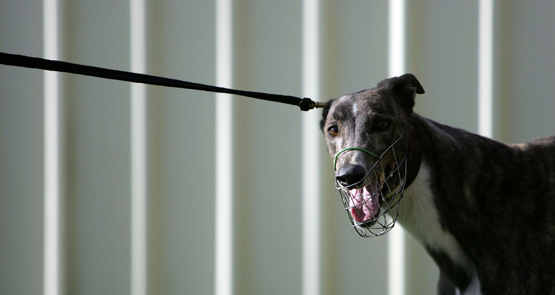The horrific live-baiting scandal exposed by ABC’s Four Corners sent shockwaves through the greyhound industry and around the country. The footage obtained by Animals Australia and Animal Liberation Queensland revealed the terror that many piglets, possums and other such forms of “bait” have endured for years for the benefit of greyhound racing.
In 2011, Four Corners famously uncovered another story of animal abuse, documenting the cruel conditions Australian cattle are routinely subjected to in Indonesian slaughterhouses.
However, what these episodes reveal most is our readiness to point the finger. They reveal our willingness to (rightfully) blame and shame those perpetrators who carry out animal abuse. In one instance the greyhound industry is put to the sword and in the other, it is the abattoirs of Indonesia. Both stories feature an easily identifiable antagonist, one that is easy to pin down. In both stories our public and political response was swift. Both industries suffered immediately.
But what if the enemy were less easy to detect?
Last year Aussie Farms, an animal rights-based website, was anonymously supplied footage inside Australia’s largest abattoir for pigs, in Corowa. The footage shows workers kicking and excessively prodding pigs into a gas chamber where they are “put to sleep” before slaughter. Once inside, the frightened swine scream and thrash about as they gasp for air. Their screams are reminiscent to those of the baited piglets before the dog devours it.
After the undercover footage of the abattoir was released publicly, abattoir owner and operator Hamsdale Australia was forced to respond. In such a situation a semblance of action is necessary. Predictable PR ensued: “We were distressed and shocked to see the footage … We have taken swift action … [we] maintain a very strong commitment to animal welfare,” and so on. In addition, Hamsdale Australia dismissed the two workers who were seen mishandling the pigs.
Almost a year has passed since the release of this footage, and the Corowa abattoir continues to operate. The site still “processes” approximately 1 million pigs each year. Except for the two men dismissed for pig mistreatment, the company’s methods were well within the law. In fact, carbon dioxide is touted by the industry and the RSPCA as the most “humane” way to slaughter pigs. In the eyes of the law, the sole wrongdoing here was the undercover installation of surveillance cameras.
Although this story achieved considerable attention, it lacked the scale and prominence to affect any immediate change. Liberal Minister for Primary Industries Katrina Hodgkinson expressed no desire to alter the status quo of abattoirs in NSW.
Moreover, the story lacked a clear-cut criminal, forcing us to confront the methods used for producing our food in our country. Although we’re probably not the workers, managers or owners of the Corowa abattoir, we are and remain an integral part of the problem. Economically, we are the demand that has led to the gross mistreatment of our supply. If a story such as this has led to relative inaction, who are we to direct blame when we witness live baiting or the appalling conditions of abattoirs overseas? If we are still willing to consume the products made at an abattoir such as Hamsdale’s, surely we must share a moral blind spot on animal cruelty.








I am surprised that CO2 is the recommended gas because a small excess of CO2 in the lungs is what prompts mammals to initiate a new breathing cycle. A large excess of CO2 promotes a feeling of panic brought on by the perception that there is a lack of air. Nitrogen gas dilutes the oxygen content of the air causing peaceful unconsciousness without promoting CO2 induced panic. That is why the presence of nitrogen cylinders near a deceased person is taken as evidence of euthenasia.
I note also that the finger pointing is at live baiters when the real issue of the mass “wastage” (killing) of unsuitable Greyhounds is being artfully side stepped.
Same with continuing to eat meat without a thought, to bet on the dogs ensures that we too are to blame.
The mass wastage of greyhounds is “artfully side stepped” by whom, Derek?
Not by Animals Australia, which has several times highlighted it, e.g. here:
https://www.facebook.com/AnimalsAustralia/photos/a.107448345298.115177.32799215298/10153587264165299/?type=1&theater
Nor by the ABC, which has run at least 2 reports on it, including this one: http://www.abc.net.au/7.30/content/2013/s3886470.htm
The ugly reality of modern animal agriculture as revealed by investigative journalists on 4 Corners, featured in Robert Kenner’s Food Inc documentary and profiled in books such as Eric Schlosser’s Fast Food Nation motivated me to stop pointing the finger at others and take some responsibility myself. Upon reflection of the environmental, ethical and health costs associated with a diet consisting of animal products I have, over the course of a year, transitioned from an omnivorous diet to a vegetarian diet and now a plant-based diet.
This shift in diet has not been easy or without temptation. Friends and family were initially skeptical and concerned for my health when I informed them about my decision. Almost all tried to point out why I was wrong in my decision, how dangerous this diet is for humans, how I would become anemic or how eating a plant based diet would make it difficult for them to cook me anything during social occasions.
Despite the difficulties there are plenty of reasons why I’ve stuck with my new approach to food not the least of which is the abundant energy I now have and lack of digestive troubles that used to afflict me. Far from “being dangerous and unhealthy” I am now thriving simply by choosing not to consume animal products. From my perspective this simple change is good for me, good for the animals and good for the planet. A plant-based diet is a triple threat to places like Hamsdale.
Be well.
I forgot to post this link to a recent story by Rosemary Stanton on the benefits of decreasing the amount of meat in the average weekly diet.
http://theconversation.com/more-than-one-good-reason-for-eating-mainly-plant-foods-38378